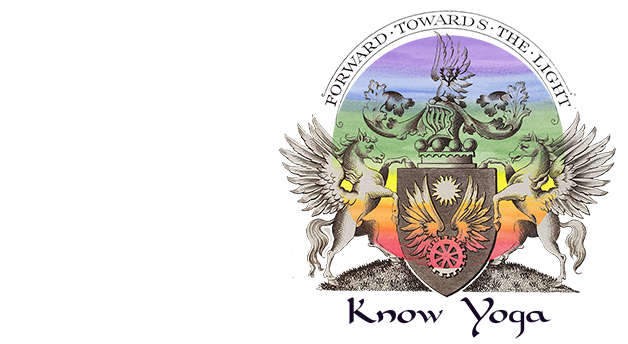I’m constantly attempting to stretch the boundaries of our understanding of agency to show that the free will we think we have is an illusion. That while the brain undoubtedly decides (based on memories) what to do in the moment, there’s a microsecond pause during which we can, if we are fully aware (mindful, if you like, though I loathe the word – mind empty is better! Aware or realising are better still!) see or fully experience the state we are in.
In this microsecond, or possibly quantum, gap, we bring into play a meta or overarching experience of our awareness that is a part of but also an extra dimension of consciousness. It is in this state that we can see ourselves angry, sad, stressed, in love, etc, and we can see that all these are reactions to previous actions.
In seeing this, we can, if we are very careful with our attention, elicit, that is, allow to come into being through us, an attitude. The most rational attitude to take to our situation is compassion, or kindness, or love. And this is us cooperating with the cooperative principles that run through every system, living and more-than-living. Everything cooperates.
This is like the Dao, or flow, or The Way. We become a part of The Way. Our practice is The Way. We disappear into it, and yet remain ourselves. In fact we are more fully ourselves than we are in the state of reactivity, which is part of Karma, Cause-Effect, Samskaras building scar tissue on scar tissue, tightening us into the knot of suffering.
When we are practicing in this Way, we let love, or compassion, or kindness, do what needs to be done. In that microsecond, instead of reaction, we become responsive.
I think this is what sages have been talking about for generations. Thich Nhat Hahn has said this time and again.Jesus of course could be said to have said this: I am The Way. But the I that he referred to is itself The Way. It is love, compassion, and the cooperation of all things with each other that we have the possibility of becoming one with.
Ultimately, it is the way that you practice that counts.


Lucy, have you read Zen and the Art of Motorcycle Maintenance, in which Robert Pirsig describes the epiphany of finding what he had tried to work out on his own in the Tao Te Ching?
LikeLike
Yes, I’ve read Pirsig’s Zen. It had a huge influence on my thinking. It may even be the foundation on which much of my own work is built, or at least a significant root, to mix metaphors again. I’ve drawn heavily from East Asian traditions of thought and because I tend to weave threads from different lineages, creating a synthesis from some Advaita Vedanta, some Shaivism, some Buddhist, particularly Zen, and some Daoist traditions of thought and writings, I’m no doubt open to accusations of amalgamation to the point of muddying. But the basis of my thinking is in evolutionary biology and what I can understand of quantum physics. Therefore I fully acknowledge that I’m a product of the global North’s ‘enlightenment’ tradition. I think, with Pirsig, that the logical conclusion of this tradition of, in Pinker’s phraseology, humanism, rationality and science, leads us inexorably to the conclusions of interdependence, a lack of free will in the traditional sense (this is not a key element of South Asian thought, but can be interpreted from some strands) and the possibilities offered by developing an awareness-based approach that opens options which are otherwise hidden, and bring us into alignment with the unfolding – which is never perfect anyhow, but is a vast improvement on the collapsing, fragmenting, obstructing effects of our illusion of control – of existence at its own pace.
LikeLike
Testing!
LikeLike
Hi Lucy, I just made the comment “testing” and it seemed to go through, pending your approval. But my intended long comment gives an error message, “invalid security token” (I think). So let me try writing a bit more.
LikeLike
Dear Lucy,
This is part of what I originally tried to post here
I’m delighted that we have Pirsig’s book in common. From the comment of yours that I am replying to, and from your latest post, “Trying to explain,” I may be coming to understand better what you mean by “free will in the traditional sense.”
¶ For example, I note in Zen and the Art what seems to be a relevant passage, which I quoted at the end of a post called “Freedom.” Here’s part of the quote:
That post, from 2014, was based mainly on Collingwood. There is a key quotation of him, from which this is a selection:
I wonder if Collingwood is thus also rejecting the “traditional sense” of free will.
LikeLike
David, I’ve been away and I’m just catching up. Thanks so much for this. I think it sounds a lot as though Collingwood is rejecting a traditional sense of free will but of course I’m not familiar enough with him to be able to know in any detail what his view on free will is. The idea of rationality being at the route of behaviour is belied by the brilliant image of the elephant emotion directed by the rider rationality (not that I think this dualistic image necessarily sums up my own much more enmeshed notion of the relationship!) by Jonathan Haidt in “Righteous Minds”. It’s interesting that your thoughts have been so heavily influenced by Collingwood’s. I’m interested too in how we communicate when we have almost entirely separate (but slightly overlapping – Pirsig being one area) fields of reference. Nevertheless, I think we should continue to attempt to understand one another’s thinking. Keep talking!
LikeLike